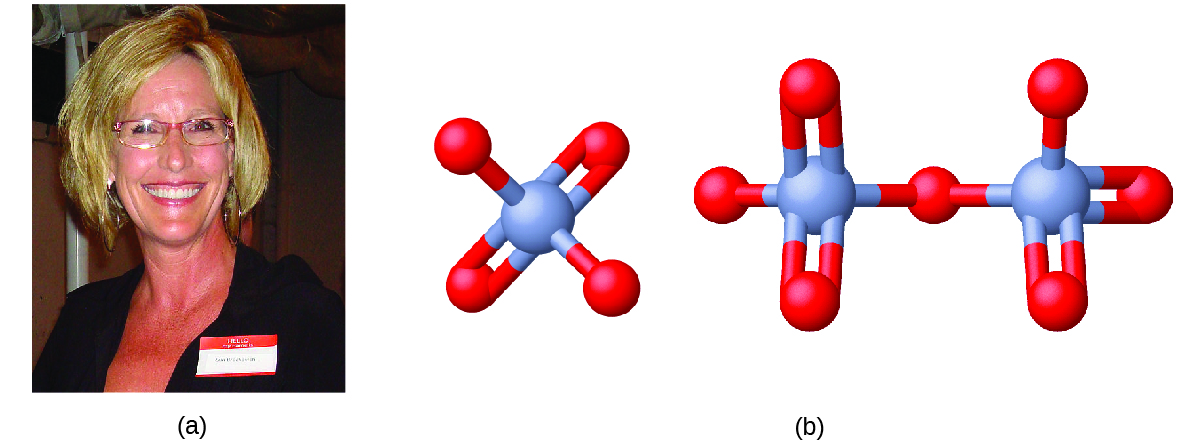| << Chapter < Page | Chapter >> Page > |
Most of the transition metals can form two or more cations with different charges. Compounds of these metals with nonmetals are named with the same method as compounds in the first category, except the charge of the metal ion is specified by a Roman numeral in parentheses after the name of the metal. The charge of the metal ion is determined from the formula of the compound and the charge of the anion. For example, consider binary ionic compounds of iron and chlorine. Iron typically exhibits a charge of either 2+ or 3+ (see [link] ), and the two corresponding compound formulas are FeCl 2 and FeCl 3 . The simplest name, “iron chloride,” will, in this case, be ambiguous, as it does not distinguish between these two compounds. In cases like this, the charge of the metal ion is included as a Roman numeral in parentheses immediately following the metal name. These two compounds are then unambiguously named iron(II) chloride and iron(III) chloride, respectively. Other examples are provided in [link] .
| Names of Some Transition Metal Ionic Compounds | |
|---|---|
| Transition Metal Ionic Compound | Name |
| FeCl 3 | iron(III) chloride |
| Hg 2 O | mercury(I) oxide |
| HgO | mercury(II) oxide |
| Cu 3 (PO 4 ) 2 | copper(II) phosphate |
Out-of-date nomenclature used the suffixes – ic and – ous to designate metals with higher and lower charges, respectively: Iron(III) chloride, FeCl 3 , was previously called ferric chloride, and iron(II) chloride, FeCl 2 , was known as ferrous chloride. Though this naming convention has been largely abandoned by the scientific community, it remains in use by some segments of industry. For example, you may see the words stannous fluoride on a tube of toothpaste. This represents the formula SnF 2 , which is more properly named tin(II) fluoride. The other fluoride of tin is SnF 4 , which was previously called stannic fluoride but is now named tin(IV) fluoride.
(a) Fe 2 S 3
(b) CuSe
(c) GaN
(d) CrCl 3
(e) Ti 2 (SO 4 ) 3
(a) iron(III) sulfide
(b) copper(II) selenide
(c) gallium(III) nitride
(d) chromium(III) chloride
(e) titanium(III) sulfate
(a) chromium(III) phosphide
(b) mercury(II) sulfide
(c) manganese(II) phosphate
(d) copper(I) oxide
(e) chromium(VI) fluoride
(a) CrP; (b) HgS; (c) Mn 3 (PO 4 ) 2 ; (d) Cu 2 O; (e) CrF 6
In the early 1990s, legal file clerk Erin Brockovich ( [link] ) discovered a high rate of serious illnesses in the small town of Hinckley, California. Her investigation eventually linked the illnesses to groundwater contaminated by Cr(VI) used by Pacific Gas&Electric (PG&E) to fight corrosion in a nearby natural gas pipeline. As dramatized in the film Erin Brokovich (for which Julia Roberts won an Oscar), Erin and lawyer Edward Masry sued PG&E for contaminating the water near Hinckley in 1993. The settlement they won in 1996—$333 million—was the largest amount ever awarded for a direct-action lawsuit in the US at that time.

Chromium compounds are widely used in industry, such as for chrome plating, in dye-making, as preservatives, and to prevent corrosion in cooling tower water, as occurred near Hinckley. In the environment, chromium exists primarily in either the Cr(III) or Cr(VI) forms. Cr(III), an ingredient of many vitamin and nutritional supplements, forms compounds that are not very soluble in water, and it has low toxicity. But Cr(VI) is much more toxic and forms compounds that are reasonably soluble in water. Exposure to small amounts of Cr(VI) can lead to damage of the respiratory, gastrointestinal, and immune systems, as well as the kidneys, liver, blood, and skin.
Despite cleanup efforts, Cr(VI) groundwater contamination remains a problem in Hinckley and other locations across the globe. A 2010 study by the Environmental Working Group found that of 35 US cities tested, 31 had higher levels of Cr(VI) in their tap water than the public health goal of 0.02 parts per billion set by the California Environmental Protection Agency.

Notification Switch
Would you like to follow the 'Chemistry' conversation and receive update notifications?